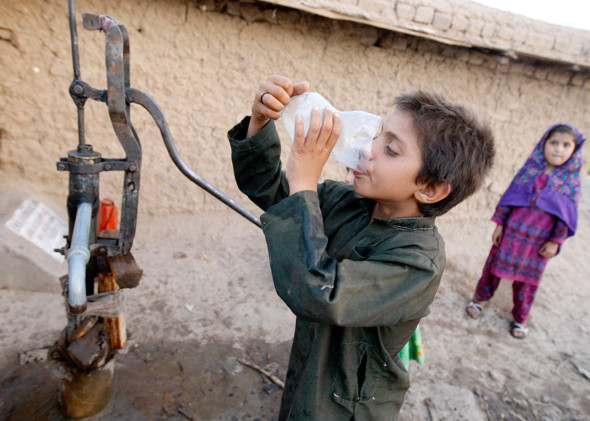We all know the implications of supplying impure and sub standard water for the people of Pakistan. The Indus Delta, the sixth largest in the world, has been on the verge of death for many years. According to the 1991 Water Accord, it was decided to ensure that downstream water supply to areas in Sindh would be mandatory till a survey was conducted to ensure the exact amount required for the province. The province suffers from the highest amount of malnutrition and hunger between Kotri and the Arabian Sea, impacting over 2.6 million people.
Karachi, the seventh largest city in the world, has an average daily water requirement of 835 million gallons per day. Only 10% of the city’s water is supplied through tankers. Another important factor that impedes equitable water distribution in Karachi is that over 35% of the water supply is stolen through different forms of organised crime — through illegal hydrants, home suction devices or through mafia control in highly populated areas, where water is sold at an illegal price as a commercial commodity. In most parts of the city water does not reach consumers through pipelines.
In some areas like Orangi, people still walk all the way to main water tanks and fill their cans manually. The pipelines that have been laid out are of substandard quality. Moreover, people have to pay their water bills on time and the Karachi Water Supply Board has to ensure that internal corruption is removed and their debt woes of almost Rs 52 billion are resolved.
Sewage has started to penetrate the water lines, contaminating the water supply with disastrous health implications. Bottled water is only affordable for the privileged and middle classes. Bottled water also may not be of the highest quality.
Ground water is brackish and not fit for consumption so over 15% of the water coming into the city is used for washing cars. People living in apartments are paying approximately around Rs 3000 per month for water supply maintenance, while still using bottled water for drinking, where the average cost of drinking water on a monthly basis is around 4000 rupees a month for an average family of four to five people. So the combined cost of water per household today would be around Rs 7000. Other families living in houses would pay far more, up by another 40%.
Dams have to be built. The last such activity was carried out 38 years ago when Tarbela dam was commissioned. As a result Sindh got an additional water and was able to cultivate an additional 27 lakh acres of cropland.
Civic sense must prevail where the people of Pakistan must be given safe drinking water. People are suffering with high prices, high inflation, higher food insecurity and we as a country are still not out of the woods as yet.





